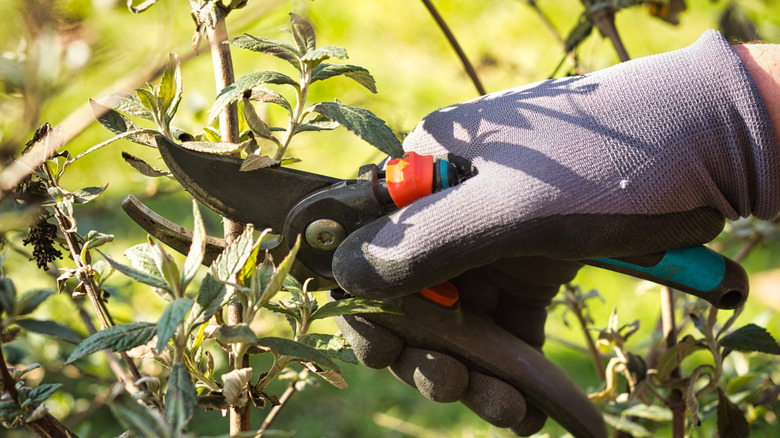When spring rolls around, garden centers are packed with beautiful flowers, trees, and bushes. Home gardeners and DIY landscapers flock to buy new plants to fill their space as the days grow warmer, but that doesn’t mean it’s the best time. Spring is perfect for planting warm-season annuals and some perennials but if you want to add a butterfly bush to your landscaped area, fall is ideal.
Before you consider buying a butterfly bush (Buddleja davidii) for your outdoor space, you should weigh the pros and cons of butterfly bushes for your specific circumstances. For example, you want to ensure it is not considered an invasive species in your region. This bush may be a beautiful source of nectar for beneficial insects and hummingbirds but this Chinese native has naturalized in warm regions that do not experience a hard freeze, including parts of the eastern US as well as Washington and Oregon. Because it is an invasive species in these areas, it easily reseeds in natural areas, taking over native plants and damaging the ecosystem. While it is not encouraged to plant butterfly bushes in those areas, it’s still an ornamental favorite in other regions.
Why you should plant your butterfly bush in the fall

Many bushes and trees benefit from fall planting because it gives them time to get settled into their new space before the harsh, cold days of winter arrive. You can plant butterfly bushes in the spring and get some new growth the same year but transplanting causes stress to the plant. This means that the bush has to recover from being planted while simultaneously establishing roots and supporting new growth. By planting in the spring, your plant will stay smaller and you’ll have fewer blooms in the first year.
Placing your butterfly bush in the ground in late fall gives the roots time to get established before the plant dies back completely for its winter slumber. Plant your new butterfly bush at least one month before the first expected frost date in your hardiness zone to give it time for the roots to recover from shock. In most regions, this will be in September or October. You won’t see much new growth during this time but that’s OK. The plant is putting all its energy into recovering from transplant shock while preparing the roots to be able to take up moisture and nutrients then burst forth from the ground when warmer days arrive.
How to plant a butterfly bush

Butterfly bushes are tolerant of most soil conditions but will benefit from some amendments when you plant. Dig a hole twice as deep and wide as the existing root ball. Amend the removed soil with one part compost to three parts soil. Gently remove your plant from the container and loosen the roots to encourage outward growth. Place your butterfly bush in the hole deep enough that the plant’s existing soil line is even with the ground’s surface. Backfill the hole with your amended soil mix and tamp it down with your foot to ensure the roots are secure. Water well after planting.
After the first freeze, your butterfly bush will begin to go dormant. At this point, you can cut the branches back to about 1 foot above the ground. In warmer climates where butterfly bushes do not go completely dormant, you can prune to achieve a desired shape or simply let it grow naturally.




